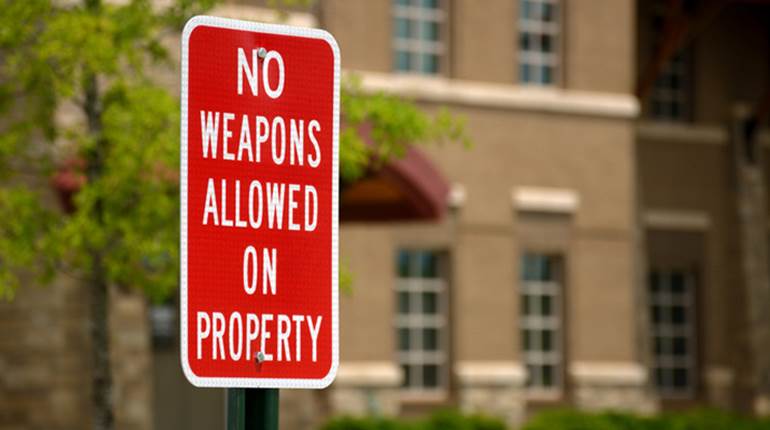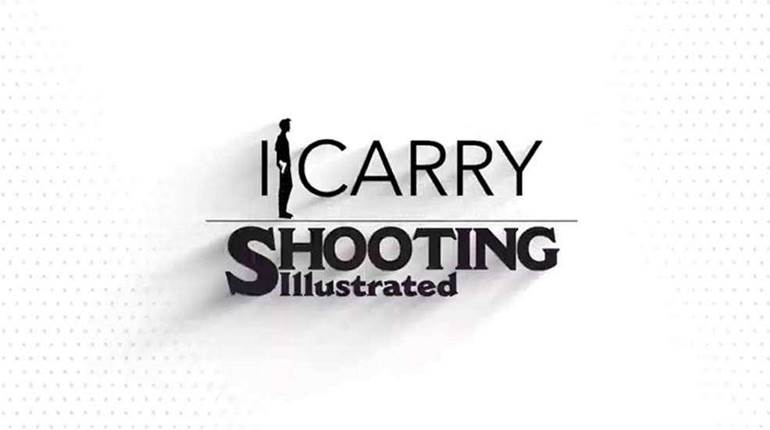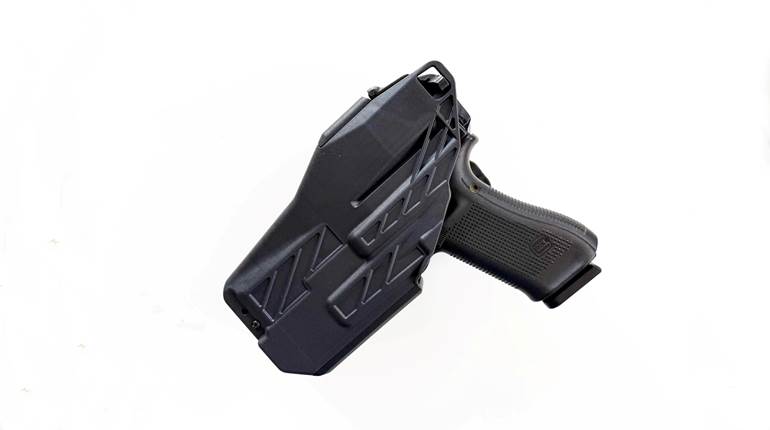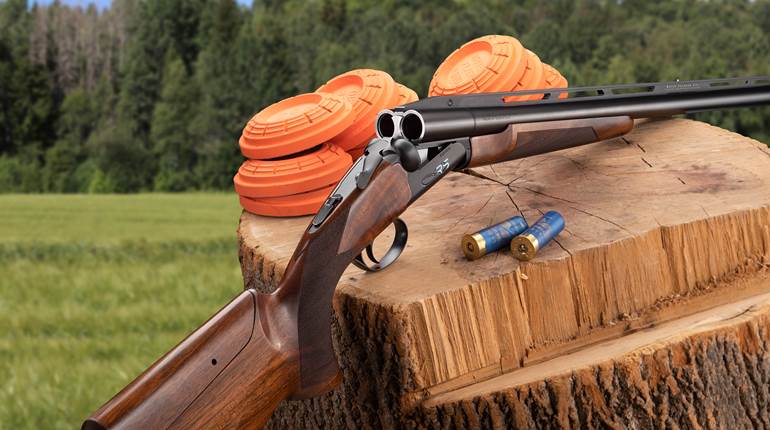
A few years ago, I set out to test Bond Arms’ claim that this company offers some of the smallest, most powerful single-action pistols you can carry. That evaluation consisted of testing 3" and 4.25" 10 mm Auto barrels with the standard-size frame. The performance results were impressive, especially for a pocketable double-barrel derringer.
Since then, the company has been working on the 'smallest' aspect of its product catalog. Some customers have expressed a willingness to set aside the benefits of the standard frame’s larger caliber options, such as .45 ACP, .44 Spl. and .410 bore shotgun shells, in favor of a pistol with a slimmer, lighter frame that can safely chamber popular medium-bore calibers including 9 mm Luger, .38 Spl. and .380 ACP.
In 2021, Bond Arms addressed these requests with the introduction of the 3" barrel aluminum-framed Stinger chambered in 9 mm and .380 ACP. With a barrel and frame width of just 0.7", and an unloaded weight of 11.5 ozs., this is the narrowest and lightest version of its over/under handgun yet. But reducing the pistol's weight this much comes with its trade-offs.
 New Stinger RS model options include the .22 LR version (top), the Honey B .38 Spec. (center) and the Stubby 9 mm (bottom).
New Stinger RS model options include the .22 LR version (top), the Honey B .38 Spec. (center) and the Stubby 9 mm (bottom).
The hardcoat anodized aluminum frame requires a fixed hinge pin. So unlike other Bond pistols, this version of the Stinger is not convertible. In addition, the production costs of the frame increase the suggested retail price of the gun to $389. Although this is less than the polished, standard-frame models, which sell for $541, it’s $112 more than the 2.5”-barreled Rough Series, standard-frame Roughneck in 9 mm.
These differences in model pricing led to the launch of the Stinger RS series in 2022. The RS in the name stands for Rough Series, which means this version of the Stinger has a matte-finished stainless steel frame instead of aluminum. The external dimensions remain the same, but the RS frame brings the suggested price down to $279. It also has a removable hinge pin that allows the barrels to be traded out, just like the standard models. But the tradeoff with this all-steel construction is additional weight. Depending on the chambering selected, the Stinger RS tips the scales at somewhere between 16 to 18 ozs.
 Stinger RS 3” barrels chambered in .327 Fed. Mag. are available as special order items.
Stinger RS 3” barrels chambered in .327 Fed. Mag. are available as special order items.
For 2023, Bond Arms diversified the Stinger RS series following continued customer requests. For those who want less recoil and lower ammunition costs, there's now a .22 LR rimfire version. Revolver and pistol cartridge fans will appreciate the addition of .38 Spl., 9 mm Luger and .380 ACP.
Two of the new Stinger RS models released in 2023 are the Honey B and the Stubby. The Stingers can be a handful when shooting 9 mm or .38 Spl. To help remedy this, the Honey B is outfitted at the factory with a B6 resin extended grip. Based on the grip designed for the company's .45-70 Gov't. Cyclops pistol, this lightweight grip is textured with palm swells and support for the little finger of the shooting hand. It's hand-filling without being overly bulky or heavy.
 The smaller .327 Fed. Mag. chambers of the special order barrel (l.) compared to the .38 Spl. barrel of the Honey B.
The smaller .327 Fed. Mag. chambers of the special order barrel (l.) compared to the .38 Spl. barrel of the Honey B.
The Stubby model is the result of the Stinger RS having its weight and size reduced even more. The barrel is shortened from 3" to 2.2" leaving just a nub of a front sight. The frame is shorter, and the integral trigger guard is gone. When outfitted with slim nylon grips, the 9 mm version of the Stubby weighs in at 13.7 ozs. according to a digital postal scale. This brings it quite close to the aluminum-frame stinger's 11.5-oz. weight while keeping the suggested retail price to $297.
For all types of handguns, there's a limit to just how much the barrel walls can be thinned before they become structurally unsound. This is why standard-frame Bond pistols are limited to .45 caliber or smaller cartridges. The more slender Stinger barrels max out at around .38 caliber.
 The ‘Wasp’ build borrows parts from two factory assembled pistols.
The ‘Wasp’ build borrows parts from two factory assembled pistols.
But what about chambering the Stinger RS in one of my favorite handgun cartridges, the spicy little .327 Federal Magnum? This rimmed revolver round operates at a maximum pressure of 45,000 p.s.i., which is slightly more than the .357 Mag. (44,000 p.s.i.) and significantly higher than .38 Spl. +P (20,000 p.s.i.). Could this pistol handle the pressure? Would Bond Arms be willing to make a cartridge-conversion barrel?
I contacted Gordon Bond, CEO of the company, with these questions and, after he and his team crunched the numbers, the answer was “Yes.” The Stinger RS pistol was up to the job, and the company agreed to make a 3"-long, Stinger RS barrel for me to work with in .327 Fed. Mag. With the barrel in hand, it was time to pick out the frame and grip. I liked the idea of reducing the pistol's weight and footprint, so I opted to use a Stubby-style frame.
Trading out the barrels is a simple process. Swing open the barrel to verify the gun is completely unloaded. Loosen and remove the hinge pin with a hex wrench, take out the old barrel, put in the new one and reinstall the pin.
 Removing the hinge pin and grip screw allows the components to be traded out.
Removing the hinge pin and grip screw allows the components to be traded out.
Last, but certainly not least, the compact textured nylon grip panels of the Stubby were swapped out for the new Honey B grip. The 3" barrel, at-home assembled pistol has been cheekily dubbed 'The Wasp' due to its potential for impressive levels of felt recoil. Having shot a fair share of big-bore Bonds in the past, I knew before pulling the trigger that the added support of an extended grip would be a plus.
The closest .327 Fed. Mag. chambered handgun I could find to compare with the Wasp for size and weight was the six-shot Ruger LCP. Both of these handguns weigh in at exactly 17 ozs., unloaded. This means they are tied for which one is the lightest. However, the Wasp is 4.3" tall, 5.5" long, 0.7" wide at the frame and 1.18" wide at the thickest portion of the Honey B grip. The LCP is 4.5" tall, 6.5" long, 1.3" wide across the cylinder and 1.1" wide across an aftermarket grip installed at the time of this writing. Overall, this means the Wasp is the smaller of the two, which may well make it the smallest .327 Fed. Mag. handgun currently available.
 The Honey B’s extended B6 grip (l.) covers and fills out the pistol’s backstrap while the slim nylon grip panels (r.) do not.
The Honey B’s extended B6 grip (l.) covers and fills out the pistol’s backstrap while the slim nylon grip panels (r.) do not.
Having tested the Ruger LCP revolver in the past, I was quite interested to see how the Wasp would perform at the range. The Wasp's 3" barrel provides 1.80" of rifled bore for the bullet to travel through, while the Ruger LCP's barrel is 1.87". But because the Wasp has a closed breech barrel, it had the potential to generate bullet velocities on par, or possibly faster, than those of a revolver. The Wasp exhibited tight tolerances and proper fitting throughout. The barrel swings open easily and locks up tightly when closed. The controls, including the left-side barrel-release lever, push-button cross-bolt safety and the rebounding hammer, all operated smoothly and properly.
Some readers may have concerns about the “Fitz Special” treatment of the Stubby frame, meaning the total absence of a trigger guard. Remember that these double-barrel pistols are single-actions. This means they cannot fire unless the hammer is fully cocked manually before the trigger is pressed. The smooth single-action trigger of the frame tested had a 3/16" arch of travel and broke cleanly with 3 lbs. 5 ozs. of pull-weight.
 The completed Wasp build has a 3” barrel and no trigger guard.
The completed Wasp build has a 3” barrel and no trigger guard.
This at-home assembled pistol did not exhibit any mechanical or ammunition-related problems throughout the course of testing, and spent cartridge cases either fell out of the chambers or were easy to kick out using the barrel-mounted extractor. The performance testing for Bond Arms double-barrel pistols is conducted a bit differently than a single-barrel handgun. Most of the evaluation process remains the same. The Wasp was fired at a target distance of 7 yards from a bench rest using the factory iron sights. Bullet velocities were checked for 10 consecutive shots fired next to a LabRadar chronograph with a 12" offset from the muzzle.
However, accuracy testing calls for a different approach because the lower and upper barrels hit to different points of impact relative to the sight picture. To account for this difference, a total of 10 shots are fired two at a time using the same sight picture while alternating between the barrels. This yields an upper barrel five-shot group, a lower barrel five-shot group and a measurable distance between the two.
 This at-home assembled pistol proved to be utterly reliable with all ammunition tested.
This at-home assembled pistol proved to be utterly reliable with all ammunition tested.
With the big-bore standard frame models, the groups I tend to tap out usually hover between 3" to 3.5" in size at 7 yards with a gap between the upper and lower groups of around 4" to 5". When testing the aluminum-framed Stinger chambered in 9 mm, the groups shrank to around 2" to 2.25" with gaps of similar sizes. The Wasp split the difference. The group sizes were more like that of the standard guns with group gaps more like the Stinger. One load punched out groups close enough to each other to overlap, which is something I haven't seen before now.
Formal performance testing was conducted with one .32 H&R Mag. load and three .327 Fed. Mag. options. Most of the rounds were provided by Federal Premium Ammunition with a now discontinued Jamison Brass & Ammunition .327 Fed. Mag. load, which was included to round out the test set. Here are the results:

One aspect of shooting Bond’s over/under double-barrel pistols which cannot be adequately reflected in performance tables is how the quality of felt recoil changes depending on which barrel is being fired. I prefer to fire the bottom (under) barrel first, which pushes the pistol straight back into the shooting hand. The recoil from the top barrel (over) tends to flip up the muzzle more, which in turn, rolls the pistol up in the shooting hand.
 Levels of felt recoil shifted noticeably depending on the ammunition used.
Levels of felt recoil shifted noticeably depending on the ammunition used.
This straight-back and roll-up movement of the pistol becomes more pronounced as recoil increases. It wasn't all that pronounced with the softer-shooting Federal Champion and Jamison loads. It became noticeable when shooting the more energetic Federal 85-grain hollow points. The longer textured Honey B grip with its palm swells made it easier to manage the roll-up of the top barrel. But firing the potent American Eagle 100-grain soft points was definitely a two-handed, hold-on-tight shooting experience, even with the larger Honey B grip.
 The over and under groups overlapped when shooting the Jamison brand .327 Fed. Mag. ammunition.
The over and under groups overlapped when shooting the Jamison brand .327 Fed. Mag. ammunition.
Every time I think that Bond Arms has tapped out the potential for new models of this over/under derringer design, the company comes up with more. The Stinger RS series succeeds in balancing cost, size and weight without sacrificing safety or quality. Is the at-home Stinger RS chambered in .327 Fed. Mag. the smallest magnum-power handgun available? If not, it's pretty darn close. And it's certainly fun to shoot for those who prefer pocket pistols with plenty of pep! For those who are interested, give Bond Arms a call, and the company will make this Stinger barrel for customers as a special-order item for $140.






































